I had the opportunity to visit the lovely city of Sioux Falls, South Dakota and local area farms recently for a farm immersion trip sponsored by the National Pork Council. While my travel expenses were paid, I was not paid to write this post, but wanted to share what I learned.
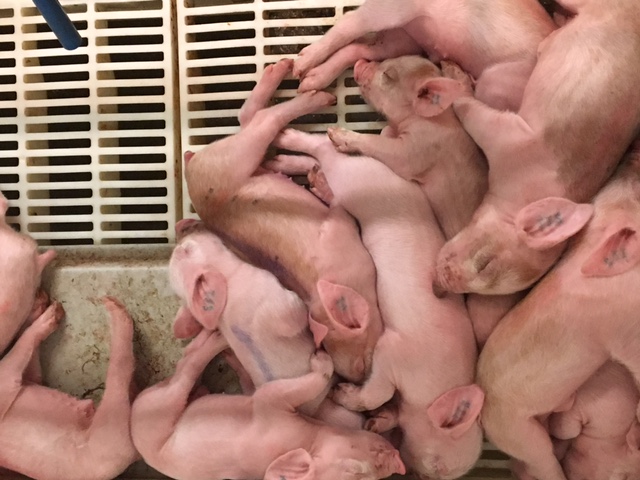
A litter of piglets resting with their siblings
There seems to be all sorts of dietary disconnect going on in America these days. There are gluten-free dieters, Paleo diet worshippers, Vegans, Pescatarians, and everything in between. People are fussy about their food and have very strong opinions about “what you should eat”. While health can be sustained enjoying a plant-focused diet that includes meat products, many vegetarians or vegans push their dietary choices onto others by creating ugly images of farming.
The Dichotomy of Animal Welfare and BBQ
So you want good BBQ, but you don’t want any animal harmed? “Animal welfare” comes up often in consumer surveys as a concern. I think the idea may have started when Chipotle ran animated commercials showcasing poor animal farming conditions (the cartoon version), perpetuating the notion that “factory farms” are “cruel”.
Over the past six years I’ve visited several real farms, and have had the opportunity to meet several farmers and their families. I also live in a rural area, and we know several families who run farms. All of these people are genuine and hard-working. They take offense to the rumors flying around about “factory farms”, poor treatment of animals, and lack of concern for the environment. This is their business, their livelihood, their family heritage. In actuality “factory farms” are large farms where animals are humanely raised for food; and 97% of pig farms are family-owned.
In every case, the farms I’ve visited have been cared for and sustained for generations. The owners of the land care properly for their animals, and preserve their land. They use advancing technologies to help them manage soil, water, crops and animals.
Sure you may be thinking, “well of course the farms you visited were nice”, and this is true. No organization is going to send you into a “messy office” to showcase an example of their work. I’m sure there are poorly run farms, and irresponsible farmers, just as there are irresponsible people in every profession. But overall, I can’t imagine too many having the desire to take on so much work and responsibility, for so little money, unless they were truly passionate about farming, devoted to the land, and cared about their animal livestock.
The Science of Farming and the Tour
There are several universities around the country that have animal science schools and South Dakota State University is one of them. It’s a beautiful campus with top notch Animal Science and Nutrition Science departments.
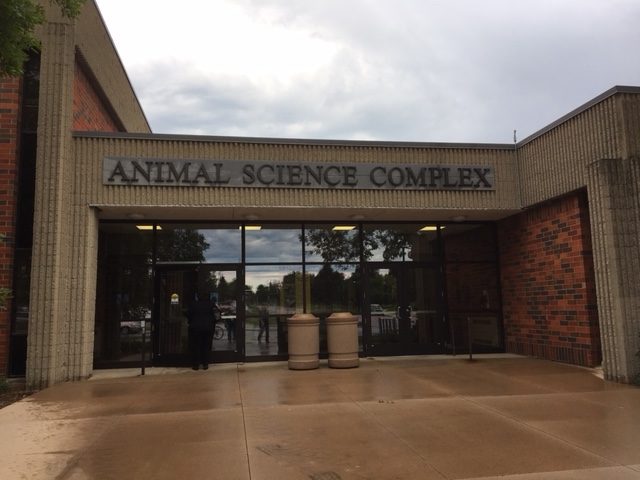
We had the opportunity to visit the Swine Education and Research Center where we heard from Russ Daly (Veterinarian and Professor, Veterinary and Biomedical Sciences Department), Dr. Erin Cortus (coordinator of the Environmental Training Program for Concentrated Animal Feeding Operations), Dr. Bob Thaler (PhD in Swine Nutrition and the South Dakota Extension Swine Specialist), and Dr Kendra Kattelman (dietitian and Director of Dietetics SDSU).
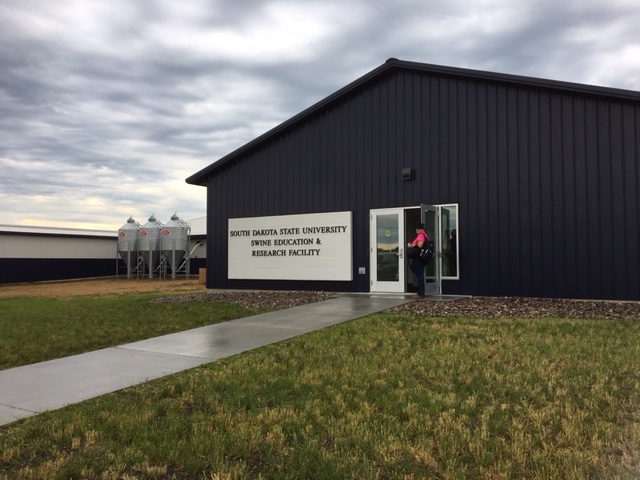
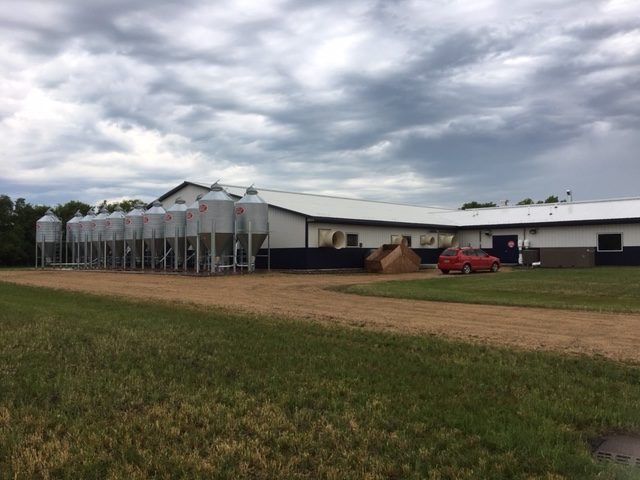
The Swine Life
We have four backyard chickens. They’re kept in a small coop (a chicken tractor which gives them fresh grass every day when it’s moved). They seem to like being close to each other and are healthy egg-layers. Pigs don’t seem to mind being close to each other either. When people become worried about “animals being penned up” or in close quarters, they likely don’t consider all of the details as farmers do. First of all, these pigs are being raised for food. This is a business that ultimately sends a product to market for its customers.
What animal science facilities continually do is work on ways to keep animals safe and healthy so they can produce the best pork products in the most efficient manner. Care for the environment and the animal are top concerns, and amazing systems have been created to ensure progress.
For instance, let’s look at manure management. As larger livestock operations are in place to meet demands, the total number of livestock has remained relatively unchanged; but, more livestock are kept in confinement (to both keep them at consistent, comfortable temperatures, safe, control disease, and manage manure). Dr. Erin Cortus is an expert in air quality and manure management (yes, there’s a science for that!). Manure analysis and soil analysis data is done so that nitrogen levels meet but do not exceed the crop’s needs.
“Manure management is about minimizing risks and losses. Through responsible management practices, we can retain more of the manure nutrients for use by the crop (replacing inorganic fertilizers), rather than losing the nutrients to the air and surrounding environment”, says Cortus
Scientists like Dr. Cortus are very interested in the emissions that result from raising agricultural animals, and are continually working to analyze systems and reduce emissions. Manure is analyzed for content which can tell the scientist how well the pig is eating and digesting, and also helps them with soil management. The manure is collected from an underground storage system that allows the manure to pass through grates in the stalls and pens. The collected manure is “harvested” every six months, when it’s vacuumed out of the barns, and into holding tanks so it can be used for fertilizer.
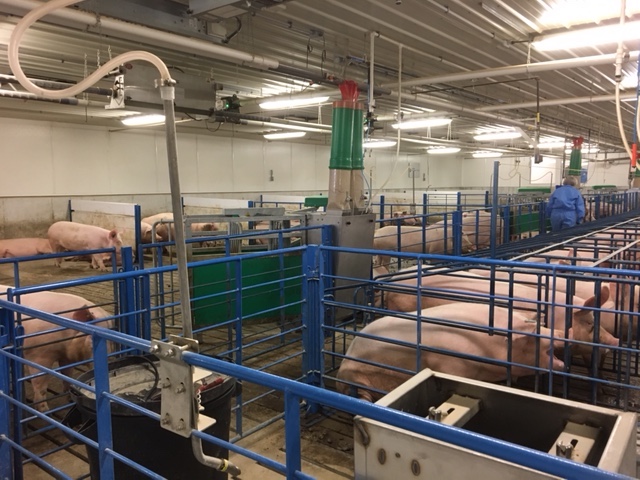
Happy Pigs
Some people have a utopian vision of animals roaming free in the fields, but this isn’t necessarily ideal when it comes to raising high quality protein. Housing pigs indoors allows the farmer to create a safe environment for the animals, control temperatures and air quality, and make them more comfortable.
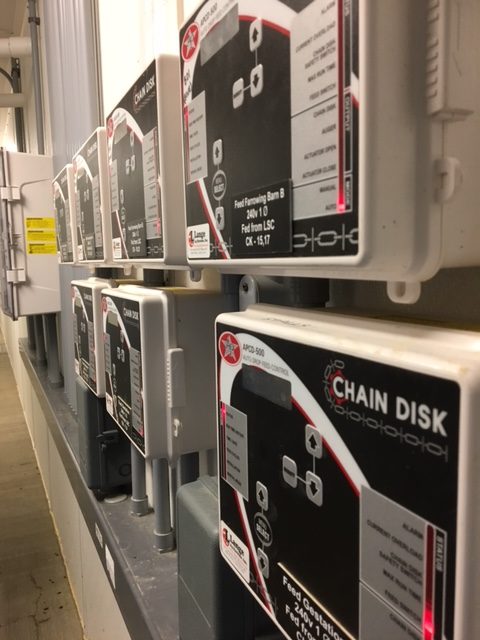
Equipment that regulates barn temperatures and air quality. During various developmental stages, pigs prefer different temperatures and conditions.
Keeping pregnant sows in pens also keeps them secure and allows the farmer to monitor their calories and health.
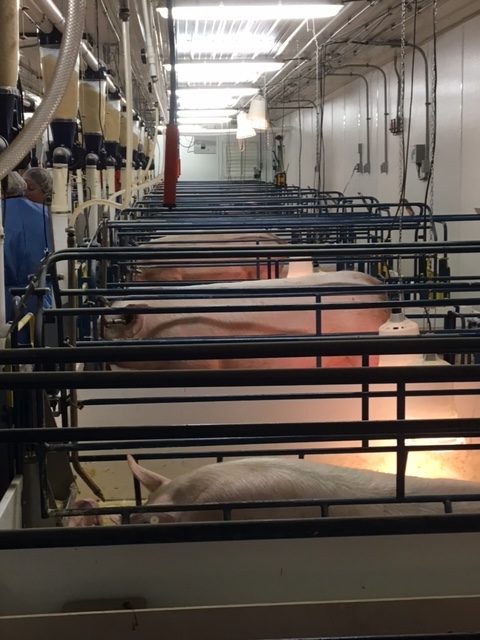
Gestation Crates keep sows safe. When in large groups, dominant sows will become aggressive, and could injure other sows.
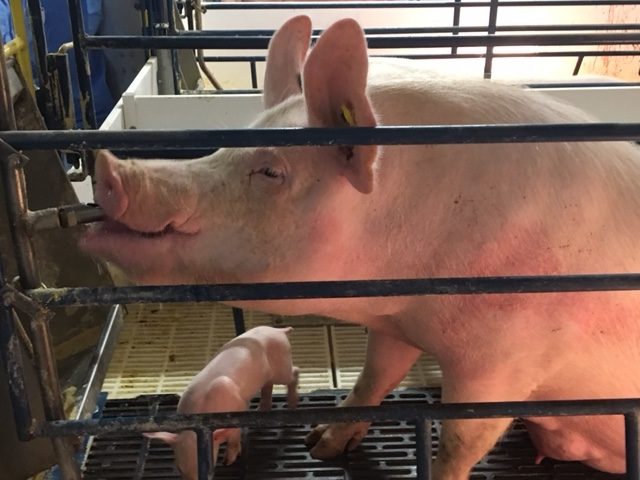
Mama pig hydrating
When the pregnant sow is ready to give birth, they are moved to farrow pens, Piglets are born (or farrowed), in farrow pens designed to keep the mama pig comfortable and fed without the risk of harming the piglets (by sitting or stepping on them).
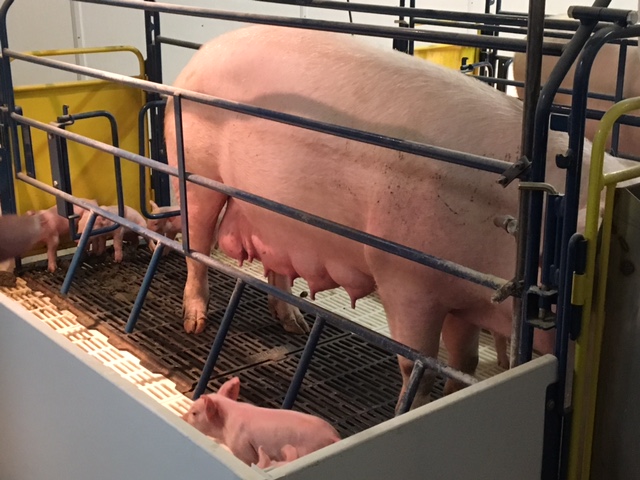
Farrow stall
Bottom Line
Here’s the deal. To supply pork products to supermarkets and restaurants everywhere, you have to raise and harvest pigs. While there’s also some public misconception about what’s best for the animal being raised, farmers take animal welfare concerns seriously, and are becoming more and more transparent.
There’s a logical, evidence-supported reason for every farming practice. The next time you hear something negative about farming or agriculture, ask a farmer your questions.

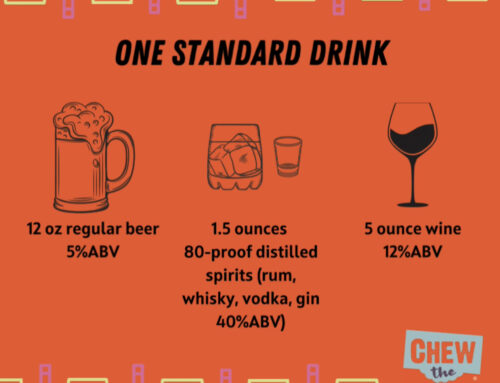
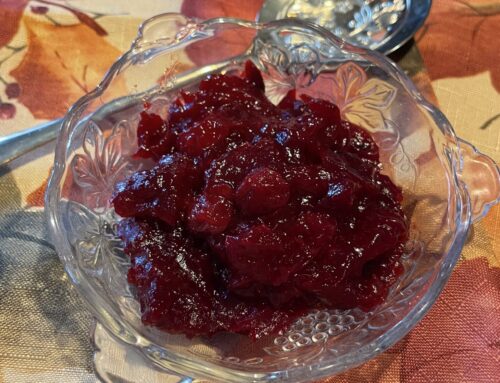

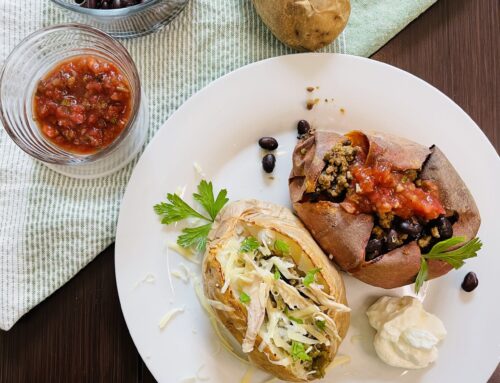
You’re completely missing the point. It doesn’t matter how “humanely” an animal is raised. They are not here for us to exploit and enslave and ultimately kill for our palate pleasure. We do not need animals to survive nor for our health. We can thrive on a plant based diet. It’s that simple. We have a choice. Choose compassion and justice.